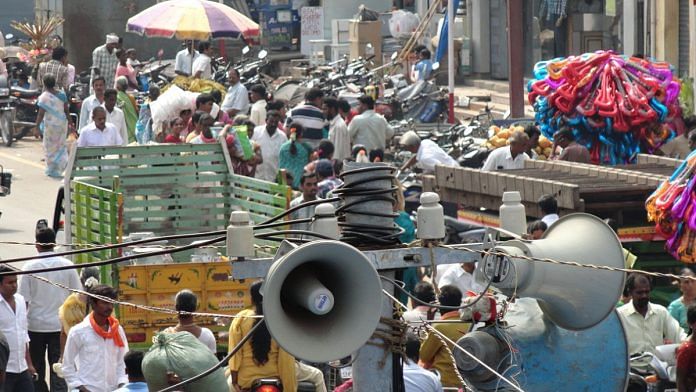When I was younger, my only encounter with the “loudspeaker”, a common Indian moniker for the public address system, was at school events or during the occasional neighbourhood wedding. And I presume I am on the same page as most other ’90s kids.
My personal space was mine; when it came to decibels violating it anyway. A raucous evening was usually a matter of choice. We would pay for it, too — movie theatres, concerts, amusement parks and roaring discotheques. Now, it comes free.
There’s no novelty to this debate. Much has been spoken and written about noise pollution in recent years. In 2007, healthcare professionals Lisa Goines and Louis Hagler wrote in a paper titled Noise Pollution – A Modern Plague: “In a way that is analogous to second-hand smoke, second-hand noise is an unwanted airborne pollutant produced by others; it is imposed on us without our consent.”
But for good measure, before we go forward, let’s go back.
In 1971, a World Health Organization (WHO) working group said noise was a major threat to human well-being. Over six decades earlier, in 1910, an observer noted: “A really silent city is impossible. But the unnecessary noise of recent years, the escapable noise, so to speak, has increased to a point beyond all reasonable tolerance.”
Loudspeakers are increasingly breaching this “reasonable tolerance”.
Also read: Ahmedabad is getting Gurgaonised. SUVs, farmhouse parties, new money flex
Decibels of discomfort
Over the past few weeks, they have blared right into my bedroom during Navratri, Dussehra, Diwali, a 13-year-old’s birthday party, Prakash Purab, a post-Nikah dinner, Chhathh Puja and the Cricket World Cup final. Chhath even had to compete with the World Cup final on 19 November, with loudspeakers switching to its ritualistic chants during a lull in the game.
Forgive me, for I use my housing society as a representative sample. It’s an arguable scientific yardstick, if one wishes to study a pattern in a controlled environment.
The Sikhs fared the best. They began celebrating Guru Nanak Dev’s birthday at 4 pm and wrapped up a not-so-loud event at 7 pm, well before the 10 pm cut-off mandated by law.
Dussehra was different. Very loud “spiritual songs” (Hindi movie music, too) played late into the night. My smartwatch warned me that “repeated, long-term exposure to sounds at this level can damage your hearing”. When I called the authorities around midnight to say that the elderly and infirm could use a break, I was asked: “Aap naastik hain? (Are you an atheist?)”
I would think I am. Because, just a few weeks later, I couldn’t stand the loudspeaker being used for possibly the country’s biggest religion: cricket.
Yes, the match on the big screen outside was two seconds ahead of the live feed on the bedroom TV, killing the sweet uncertainty of the game. But what I couldn’t stand was the cacophony outside, and inside.
As should be obvious by now, this is not about religion. If it were, we’d be arguing why some religions are able to use the loudspeaker more than the others.
No.
It’s about personal space and the agency people hold over it. That if a group of individuals decides to use the loudspeaker in public or even private spaces, they must limit its scope to the target audience meant for it. We must watch the decibels.
“Noise is not about religion or celebration. It is a serious health issue, and people need to recognise they are already in the red,” anti-noise pollution activist Sumaira Abdulali has said.
Described as a lonely crusader who was just beginning to create a buzz, Abdulali urged people to wake up to the menace then. Not much has changed now.
The debate on air pollution was once not part of our collective conscience. But things changed over time. We opened our eyes to it only when we could actually see it in the air and feel it in our throats.
We must not wait for our ears to bleed.
(Edited by Zoya Bhatti)



